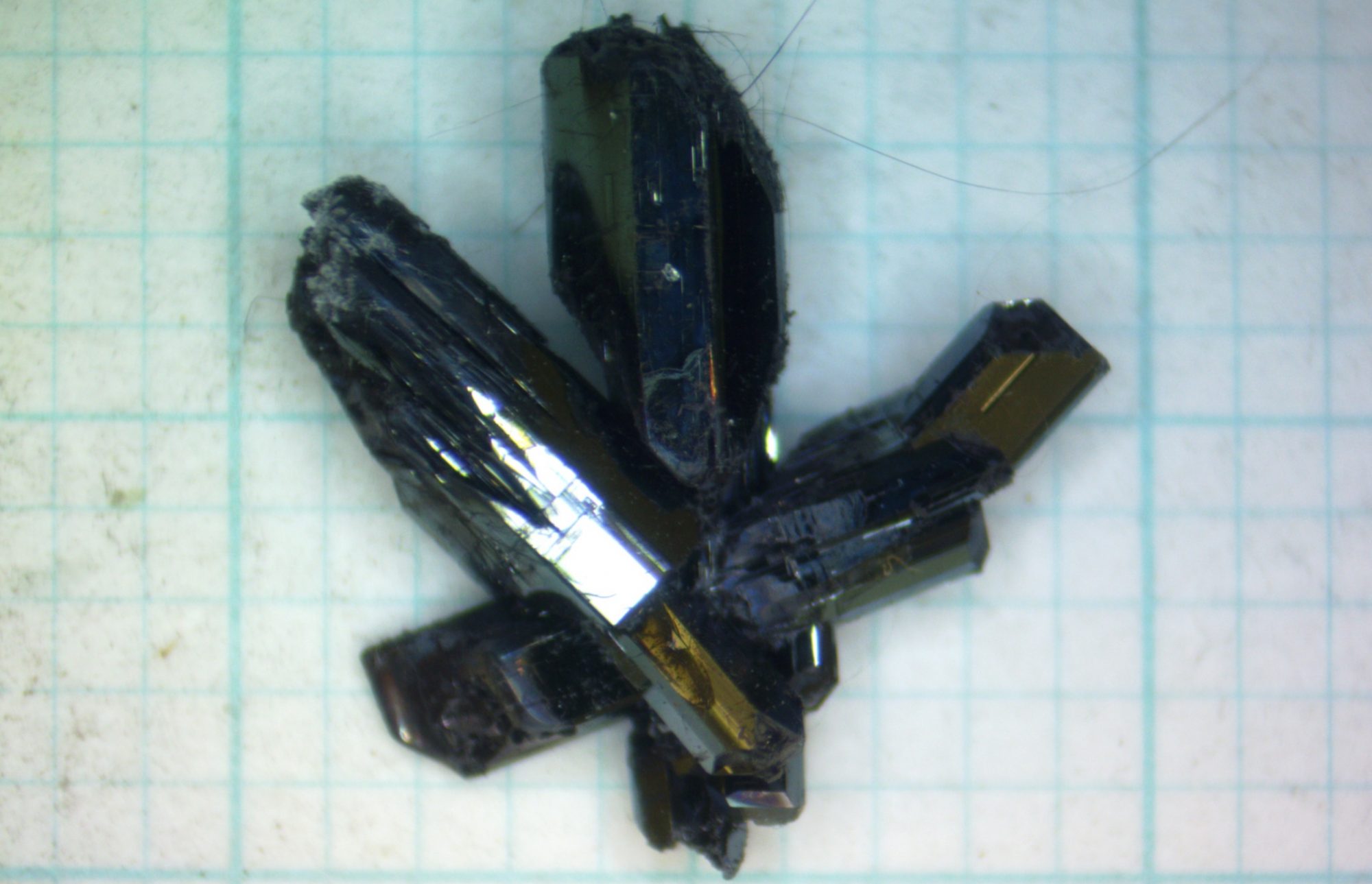Our work seeks connections between the solid-state chemistry of materials and the physics of their functional behavior. Our synthetic capabilities range from traditional oxide synthesis to encapsulated flux growth of inorganic (sulfide, intermetallic, etc.) single crystals. We use a wide array of characterization and modeling tools to understand how our materials were formed, measure their properties, and understand new routes to engineering functionality or new synthetic tricks. Selected examples are listed below:
Tuning materials synthesis in situ
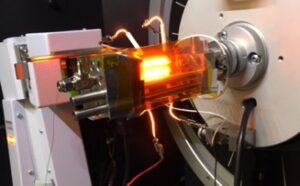
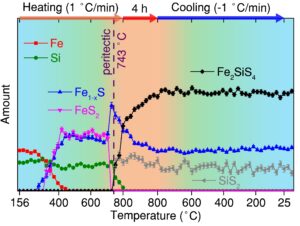
Traditional inorganic materials synthesis is often performed ex situ: the products are only examined after the reaction has completed. We use x-ray and neutron scattering and optical spectroscopy to monitor our materials synthesis reactions in situ. In addition to discovering new semiconductors on the fly, we are keenly interested in the mechanisms of how new materials form and how to control these processes.
This work is supported by an Early Career Award from the US Department of Energy, Basic Energy Sciences.
Z. Jiang, A. Ramanathan, D. P. Shoemaker. In situ Identification of Kinetic Factors that Expedite Inorganic Crystal Formation and Discovery. J. Mater. Chem. C. 5 5709-5717 (2017)
R. D. McAuliffe, D. P. Shoemaker. Inflexible stoichiometry in bulk pyrite FeS2 as viewed by in situ and high-resolution X-ray diffraction. Acta Cryst. B 74 1-9 (2018)
Spin dynamics in antiferromagnets
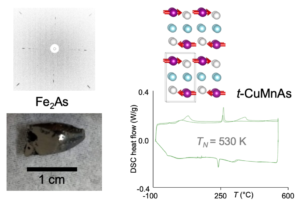
Antiferromagnetic (AF) materials contain localized spins that are ordered below a critical temperature, like a ferromagnet, but in AFs the spins are arranged antiparallel to each other within the magnetic unit cell, giving them zero net moment. Historically, these materials have only been useful as pinning layers in magnetic data storage. However, recent reports have emerged that hint at extremely fast response of AF spins to thermal and optical stimuli, along with the possibility that electrical currents can torque the AF moments. We are investigating the fundamental spin excitation processes that occur in these materials, while also expanding the library of known metallic AF materials that show ordered spins at room temperature. Crystal growth, transport measurements, and neutron scattering are key efforts in this project.
This work is part of the Illinois MRSEC, supported by the National Science Foundation.
M. H. Karigerasi, K. Kang, A. Ramanathan, D. L. Gray, M. D. Frontzek, H. Cao, A. Schleife, D. P. Shoemaker. An in-plane hexagonal antiferromagnet in the Cu-Mn-As system, Cu0.82Mn1.18As. (submitted)
K. Yang, K. Kang, Z. Diao, A. Ramanathan, M. H. Karigerasi, D. P. Shoemaker, A. Schleife, D. G. Cahill. Magneto-optic response of the metallic antiferromagnet Fe2As to ultrafast temperature excursions. (submitted)
Discovery of new functional inorganic materials
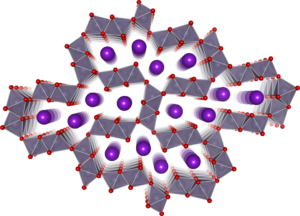
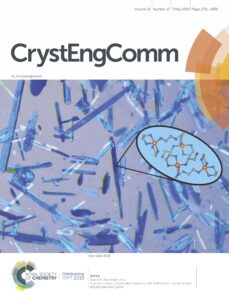
New compounds with never-before-seen crystal structures can give rise to unexpected behavior that introduces new physics. These are made experimentally and the structures are usually solved from single crystals. Such compounds are often said to be obtained through serendipity, but that line of thought belies the amount of foresight required to identify a relevant material system and develop a synthesis plan. We work on new ways to identify fertile regions of phase space where new compounds are more likely to occur. Crystal growth is performed by melt and flux synthesis, vapor transport, solvothermal, hydrothermal, and solution methods.
J. Sharma, Z. Jiang, A. Bhutani, P. Behera, D. P. Shoemaker. A unique copper coordination structure with both mono- and bi-dentate ethylenediamine ligands. CrystEngComm 21 2711-2711 (2019)
R. D. McAuliffe, C. A. Miller, X. Zhang, B. S. Hulbert, A. Huq, C. dela Cruz, A. Schleife, D. P. Shoemaker. Structural, electronic, and optical properties of K2Sn3O7 with an offset hollandite structure. Inorg. Chem. 56 (5) 2914-2918 (2017)
In-situ measurements of field-assisted sintering
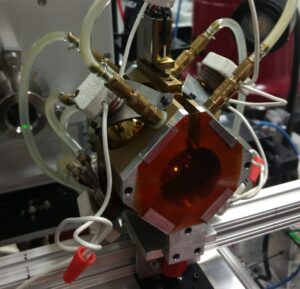
Processing of ceramic materials with an applied electric field is usually performed as spark plasma sintering (in a graphite die, with applied pressure) or as flash sintering (contacted by Pt electrodes, open to air). The fast Joule heating leads to unique reactions and microstructures, while the field effects near the electrode can dominate the transport behavior and lead to surprising phase equilibria. We are exploring the flash process with in-situ X-ray scattering and optical spectroscopy. This work is supported by the US Army Research Office.
S. E. Murray, T. J. Jensen, S. S. Sulekar, Y.-Y. Lin, N. H. Perry, D. P. Shoemaker. Propagation of the contact-driven reduction of Mn2O3 during reactive flash sintering. J. Amer. Ceram. Soc. (accepted)
B. Yoon, D. Yadav, B. Yoon, R. Raj, E. P. Sortino, S. Ghose, P. Sarin, D. P. Shoemaker. Measurement of O and Ti atom displacements in TiO2 during flash sintering experiments. J. Amer. Ceram. Soc. 101 (5) 1811-1817 (2018)
